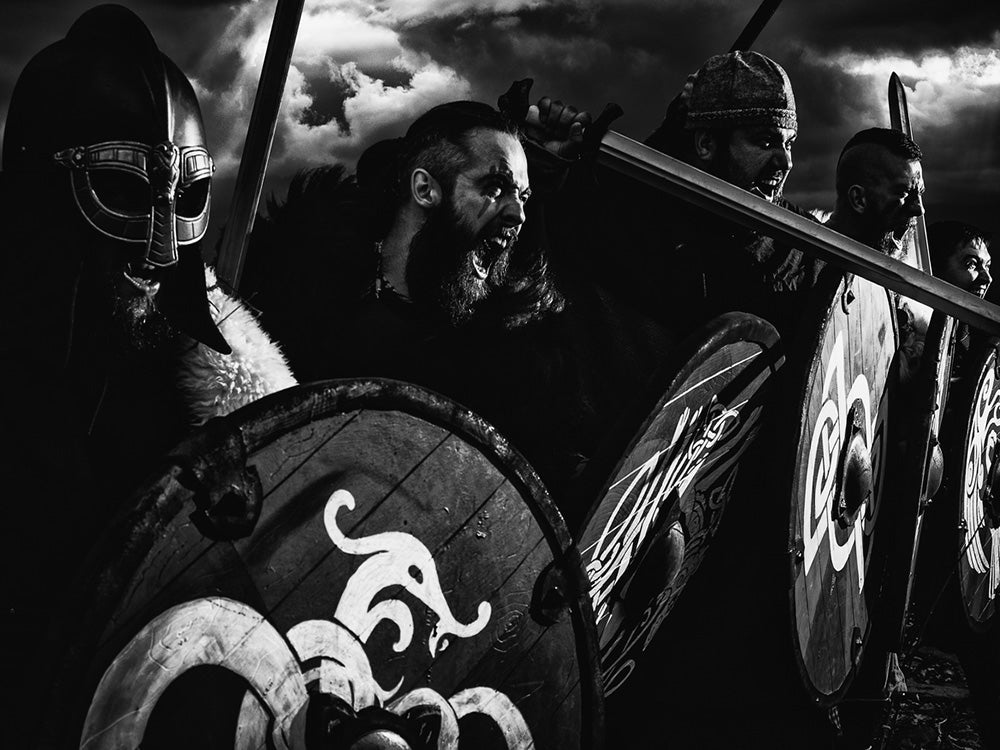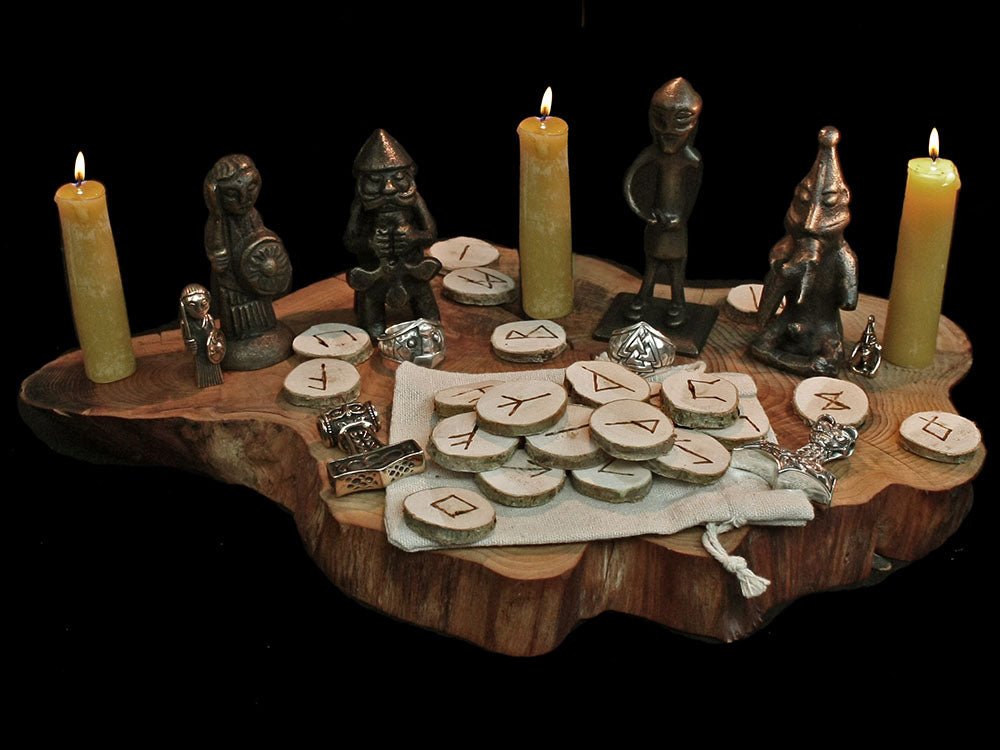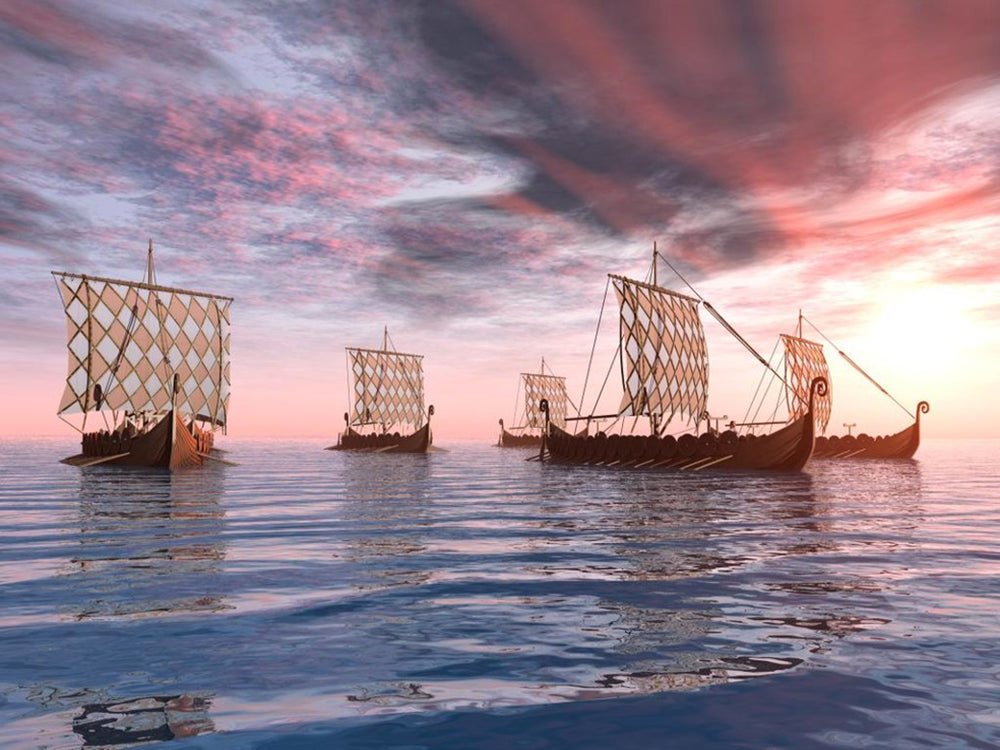In previous blog posts, we’ve looked extensively at the lives that Vikings lead, from the food that they ate to the role of women in society, but we’ve barely touched on the path that Norsemen and women believed was waiting for them after death. Though Vikings believed that the souls of the dead could end up in a number of spectral realms, no doubt the most famous is Valhalla: The Hall of the Fallen.
A jovial kingdom where the dead lived happily under the watchful eye of Odin, being granted entry to Valhalla was the ultimate achievement of a Viking warrior. Entrance was selective, allowing only the bravest and more honourable the chance to sit at the eternal feasting table beneath the gold-bright roof of shields.
But how would you gain entry to the most prestigious realm of the afterlife, how would you spend your days there and what was the catch to live the Viking dream after death?

Who Goes to Valhalla?
Not just anyone could get into Valhalla. Odin had a strict admittance policy, allowing only the best and the bravest warriors into his kingdom. In the Prose Edda, Icelandic poet Snorri Sturluson tells us that a Viking could only make it to Valhalla if he died in battle. Those who died of sickness, old age or any other natural cause, no matter how fearsome a warrior they had been in life, would go to Hel, the Viking underworld.
Sturluson is the only writer who gives us a direct statement about who can and who cannot go to Valhalla in Norse folklore. That being said, some historians have suggested that his tidy separation between Valhalla and Hel may be an oversimplification designed to systematise the often messy threads of Viking mythology. Iceland had already converted to Christianity by the time the Prose Edda was written, and it’s likely that while Norse religion was being actively practised it was believed that any exceptional warrior, whether they died in battle or peacefully in their bed after a lifetime of victories, could be granted entrance to Valhalla. After all, if Odin wanted only the best fighters it wouldn't make sense to rule out warriors who were unbeaten.
As well as being an exceptional warrior and possibly dying by the sword, a Viking had to be honourable both on and off the battlefield to go to Valhalla. A successful candidate would be rational and just, and not act greedy, cruel or dishonest. It was also generally seen as helpful to be devoted to Odin in life since he was the one who got to pick where you went after death. Frequent offers and sacrifices to the God of War would not go amiss.
Life in the Hall of the Fallen

Valhalla was one of the 12 realms of Asgard, the home of the Gods. To get to Valhalla, a fallen warrior would be collected on the battlefield by a Valkyrie, to then be carried on horseback across Bifrost, the rainbow bridge connecting Midgard to Asgard.
Once he arrived, the Viking warrior would find a (near-)eternity of fighting, feasting and festivities stretched out before him. Each day, the realm’s residents would pass the hours fighting for sport without the risk of bodily harm. They could rest assured that any injury that they acquired would be fully healed by evening time, when a boar named Saehrimnir would be slaughtered, and the men would feast on his fresh meat. Alongside this offering, they would drink liquor milked from a magic goat called Heidrun. Just like the warriors’ fast healing wounds, Saehrimnir would be revived each day to be feasting on until the arrival of Doomsday.
The Ragnarök Army

A life after death of raucous revelry is surely all that a Viking warrior could ever dream of, so what’s the catch? Odin wasn’t collecting the best and more fearless Vikings out of the goodness of his heart but building an army of excellent fighters to support him on Ragnarök.
Just like other belief systems around the world, Norse theology foretold a Doomsday called Ragnarök, in which the world would be destroyed in a series of catastrophic disasters. Midgard would be burned, and the world would be submerged underwater. The Gods would then have to go to war against the giants and the beasts. Most fearsome of all would be Fenrur, a demonic wolf created by Loki and the giantess Angerboda. On Ragnarök, he would break free from the rock that he was chained to devour the sun and eventually swallow Odin whole.
Though Odin was prophesied to meet his end on the Ragnarök battlefield, he still wanted to be prepared for the upcoming fight. His army of fallen warriors in Valhalla, the Einherjar, would fight by his side on Doomsday, offering the Gods the greatest possible chance of success in a war that they were fated to lose.
Afterlife Alternatives

The Vikings had a complicated belief system when it came to the afterlife. Valhalla was by no means the only option on where to go after death, so even if a warrior missed out on the ultimate glory of being welcomed into Odin’s realm, he would still have had an onward destination.
By some accounts, Odin let in half of those who died in battle, leaving the other half to the Goddess Freya. Those souls would be taken to Fólkvangr, meaning ‘people’s field’ or ‘field of the host,’ where they would live happily, though less raucously, until Ragnarök. The dead would live in Freya’s palace, Sessumnir, which is often depicted as a vast ship resting in the centre of a grassy field. Some archaeologists have theorised that the ship-shaped burial mounds, often found in open fields, could be a reference to Sessumnir, and a way for the living to ask Freya to take their departed loved one into her realm.
Alternatively, if a Viking were to lose his life at sea, before even getting to the battlefield, he might find himself in the Realm of Ràn. Ràn was the personification of the ocean in Viking folklore, and often depicted as mysterious and cruel. She was said to catch the souls of Vikings lost at sea in her net and take them to spend the rest of time in her underwater kingdom.
Finally, any Viking who died of sickness, old age or an accident could go to Hel, the Norse Underworld. Though the name sounds similar to the Christian Hell, Viking Hel was not a place for eternal damnation, but somewhere where Norsemen and women could spend their days eating, drinking and socialising. Hel was certainly less prestigious than Valhalla and Fólkvangr, and was located underground rather than in Asgard, but despite this, it was generally seen as a neutral, if not pleasant, place to spend the afterlife.




